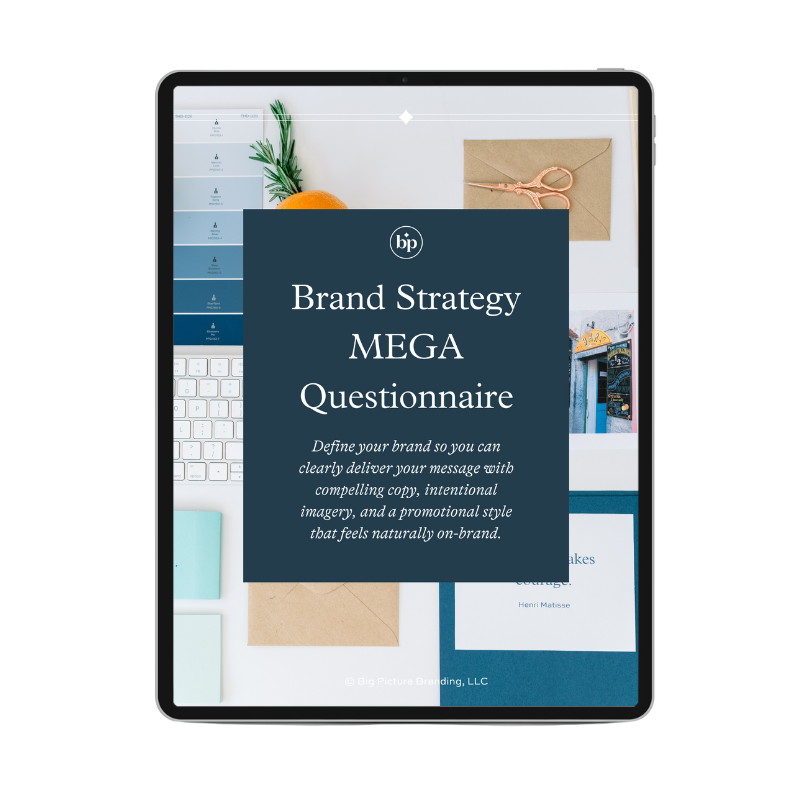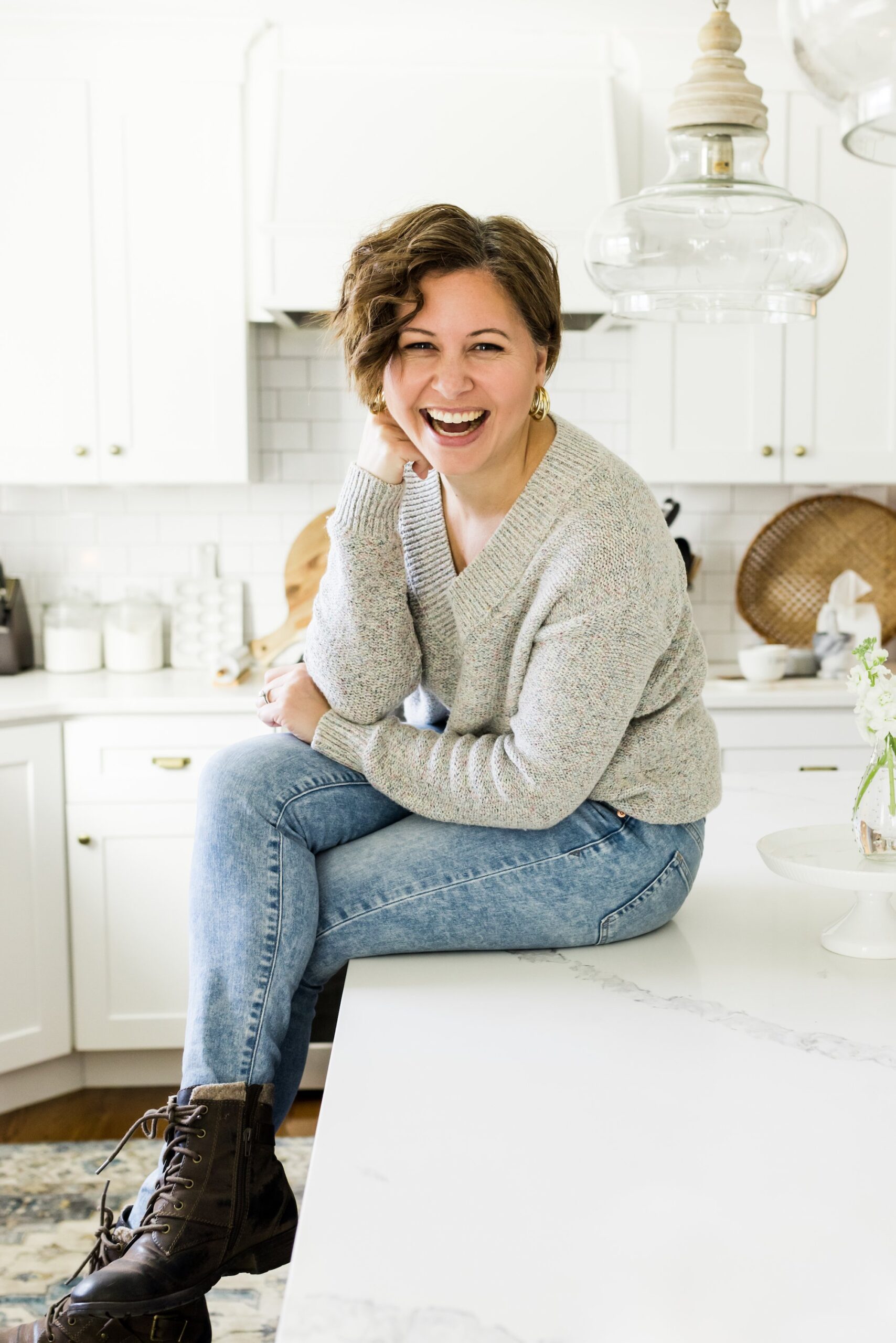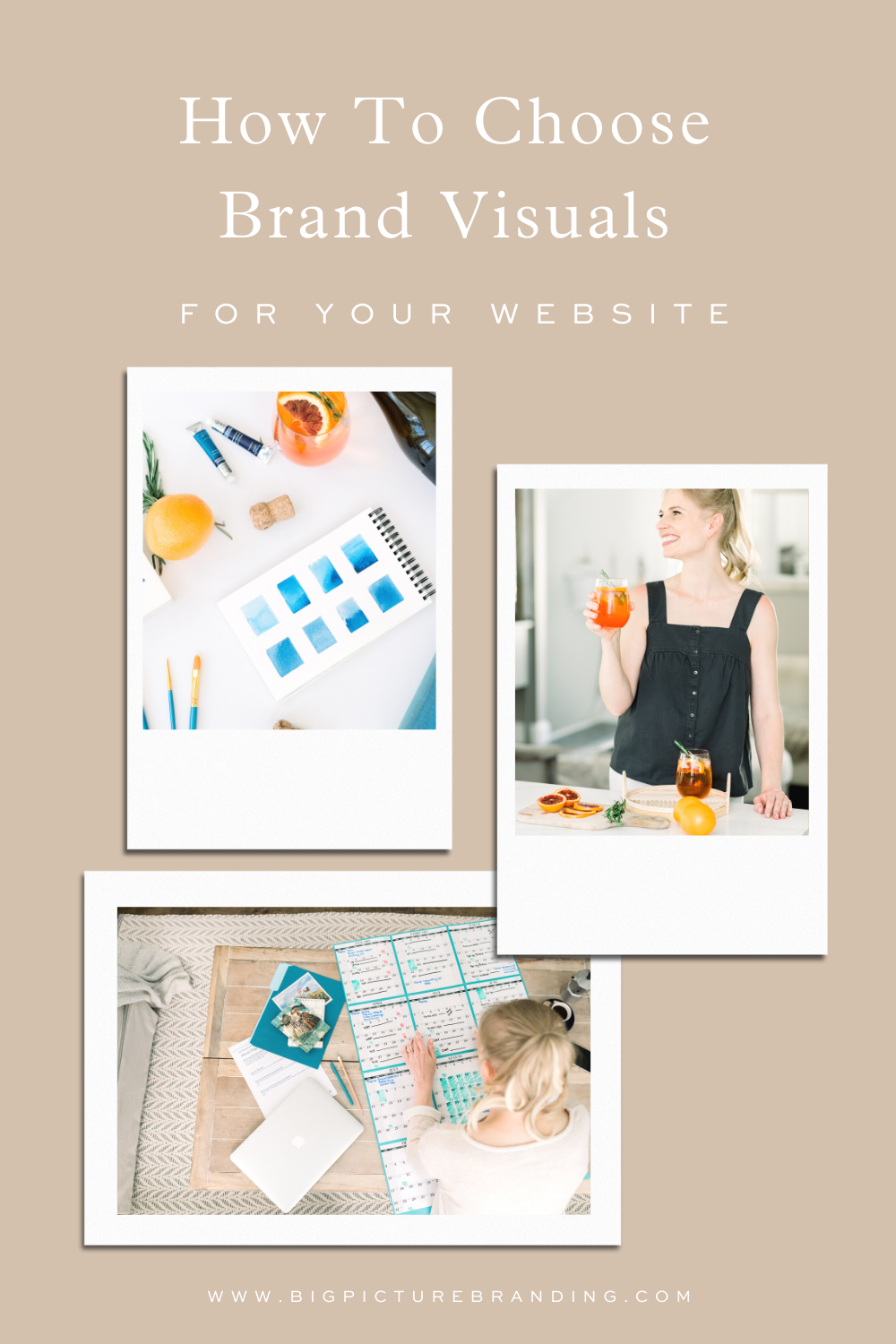With over 5.4 million new business owners added to the online ecosystem in 2021, becoming a memorable brand isn’t a game reserved for startups and big business. You can bet that when someone visits your site looking for a service or product, they’ve got Google open in the next tab over, ready to show them 10 other businesses vying for your sale.
And gone are the days when a website could be functional, but boring, and still convert. Tools like Canva, online marketplaces like Creative Market, and the explosion of template businesses like my fav, Tonic Site Shop (use BIGPICTURE for 20% off), have made beautiful website design accessible to everyone.
Especially DIY-ers.
You can create anything, but with great power comes the great responsibility of developing a memorable and consistent brand identity—even when you’re using a template.
Even a template needs to be styled to fit both your internal brand and your external brand.
What’s internal branding?
Internal branding consists of the vision, values, beliefs, and desired emotions you want your brand to convey.
Without a clear internal brand strategy lighting your path, you’re likely to look, sound, and feel like a mix of conflicting personal preferences instead of one cohesive identity that aligns with your audience’s expectations.
If writing your copy is a struggle, you need to take a second look at your internal brand strategy, and, in particular, your 5 Brand Pillars: Purpose, Perception, Personality, Position, Promotion.
How to use your brand pillars to inform your internal brand and website visuals.
Your brand is an ecosystem and the five pillars are the litmus test for what is and is not “on brand” for your business. Your internal brand pillars are actionable.
Your brand pillars can be used to inform:
-
The most appropriate marketing channels for your business
-
Your ideal business model (1-1, evergreen, licensed)
-
Your brand voice and vibe
-
Your copy and messaging (value prop, elevator pitch, taglines, headers, product names and descriptions)
-
Your brand imagery/stock photography and iconography
-
How you respond to client and customer service inquiries
-
How you pitch yourself for speaking gigs or PR/media
-
Brand colors and fonts (because of *what of what they convey*)

If you’re not sure what makes you, you, and your copy lacks a distinct personality or voice, pause and grab the BP Brand Strategy MEGA Questionnaire to find brand clarity that will make writing your copy and choosing external brand imagery much easier.
Grab the Questionnaire for $35
What is external branding?
External branding is informed by your internal branding and includes all the elements that people can see such as your logo, colors, typography, photography, website design, animations, iconography, patterns…the list is long.
When designing a website or brand identity, you’re likely tempted to skip the internal strategy process and go straight for the fun stuff. But this decision rears its ugly head when you step back and realize you 1) look just like everyone else 2) have a ton of conflicting aesthetics on page 3) have no sense of cohesion that ties everything together.
How to use your brand pillars to inform your external brand and website visuals.
When it comes time to think about your visuals ask yourself:
-
What are some visual elements that would help convey my purpose?
Photography showing collaboration, happy clients, family, teamwork? -
What are some visual elements that would help convey my perception?
Are you known for being laid-back or no-nonsense? Strategic or worldly? -
What are some visual elements that would help convey my personality?
Does a dark and moody or vibrant and bright color palette convey how you make others feel? Do editorial or funky fonts make the most sense? -
What are some visual elements that would help convey my position?
Are you an authority figure or expert? Do you serve a luxury market or sell high-touch/ticket offers? Are you serving creatives or buttoned-up corporate clients? -
What are some visual elements that would help promote my business?
Which marketing channels make sense for you to focus on and what kinds of assets will you need? (Headshots, flat lays, banner images, business cards, icons, secondary logos, stationary, thank you cards, packaging…)
But you don’t have to take my word for it…
Meet my brand designer and brand photographer:


I interviewed Vero of Vero Branding and Jessie of Jessie Wyman Photography to understand how they use their client’s pillars to carve out a unique visual identity that’s anything but cookie-cutter. The work they create for their clients – even clients within the same field as each other – has to look completely different from business to business in order to convey different personalities, processes, brand experiences, and price points.
Pull up a chair and read on for how these ladies answered my brand strategy meets brand visuals hot-seat questions!
**And if choosing your colors and brand photography shot lists are part of your “must figure out” list, scroll to the bottom of this post for some ✨goodies!✨**
1) When you’re designing or shooting for a brand, how do you use your client’s brand pillars to inform your work? Which of the 5Ps helps the most?
VERO: Before getting to the drawing board, we identify your Purpose, Perception and Personality. These P’s will lead us to your brand’s key attributes, or the feelings you want to convey through your brand. How you want your audience to feel influences the colors, fonts and logos we’ll choose for your brand.
JESSIE: If my client has done the work upfront and has these pillars identified, they are so super helpful in informing their brand photography session. I would say the ones that are most helpful for me and my work are Personality as it can really help set the scene and inform what type of shots we will be getting. Your brand’s Position really allows me to understand who your audience is, what market you’re serving and how to appeal to them. I can then create a shot list that will help bring that business to life.
2) Let’s say someone comes to you and they don’t really know (or are really indecisive about) what they stand for and how they want to come across – how do you help them find brand clarity?
VERO: We always start with a visual strategy session. In it, I learn everything about you, your audience, and your business, from the inside out. When we have a more mindful look at your brand as a whole, brand clarity happens seamlessly. I will say, an important thing to know before you look for a brand designer is the foundation of your business (ex: what you do or offer, who you serve, and why you do what you do.) Your foundation informs your visual identity and how you’ll present yourself out there.
JESSIE: Talking it out is key! While I don’t claim to be a brand strategist (that’s your job, Courtney!) I do try and ask some very basic questions to help them find clarity. I ask these questions through my onboarding questionnaire, which goes out after we’ve officially agreed to work together. I will ask them things like “what pain points or problems are you trying to solve for your clients?” Your current branding and examples of visuals you’re drawn to are also super important when creating imagery for your brand so I also ask my clients to start a Pinterest board or list of inspiration from other websites so I can gain an understanding of their desired vibe.
3) Pinterest is a blessing and a curse — how do you avoid shiny-object syndrome?
VERO: I LOVE Pinterest and can spend hours and hours scrolling in the rabbit hole. Inspiration is everywhere, and it’s ok to be inspired by others! The thing to keep in mind is that someone else’s brand identity or design probably won’t be as effective for you. That’s because we’re all different in the way we present ourselves and communicate. When you copy someone else’s look and feel you end up not being true to your brand. To build a sustainable and long-term brand, anchor on your 5 P’s and key attributes first. This will allow you to craft a brand that’s authentic to you and one-of-a-kind, making you stand out. (Your brand just might become the inspiration for others! It’s so fun when you see your brand on someone else’s inspiration board.)
JESSIE: I had to google ‘shiny-object syndrome’ before responding to this question! (LOL) So, how do I avoid focusing all my attention on something that is new, current or trendy and then dropping it as soon as something new takes its place? With photography, I think it is important to ensure the direction of the imagery makes sense for the brand. We all see trends in photography, mainly with editing, but there is also composition and content trends as well. When thinking about editing, composition, and lighting you need to make sure it aligns with the brand. For example, a brand with a loud, fun, funky personality may be well-suited for photos that have a bit more pop and could benefit from fun shadows, vibrant backgrounds, and interesting angles. While a more traditional brand, with a more serious tone, would be more suited for less contrast, perhaps more neutral backgrounds, and traditional composition techniques. So when doing a “Pinterest exercise” I think it’s important to review the images selected to ensure they have been selected because they make sense and are not just a trend.
4) What do you do when someone has it in their mind that they want to look exactly like someone else?
VERO: I ask why. I see a lot of business owners wanting to be like a specific brand because of what it means to them or how it makes them feel. That’s a great intention to bring into your visual strategy! Knowing those qualities is the starting point for discovering your true brand. It takes bravery to embrace your authentic brand. It unlocks a level of confidence for you that makes people see you, want to hear from you, and be close to you.
JESSIE: This can be tough because many of my clients come to me and see my portfolio and say “I LOVE all the images from so-and-so’s session, I’d like something just like that”. Which is super flattering, but also challenging to then make sure their session is different and unique. I try to find something that we can incorporate into their session that is unique to only them. Maybe this person loves pizza or maybe they were once a ballet dancer. I ask myself if there is a way to incorporate those unique nuggets into their session.
5) Can you give me an example of a time when a client in a competitive space was able to differentiate themselves thanks to strategically aligned brand visuals?
VERO: Yes, I’ve worked with a lot of brands in similar spaces. So many clients report back how proud they are of their brand and how people notice and remember them over their competitors. I believe the work I do with each client goes beyond the visuals we create for their brand. It’s all about helping you fully step into and own your identity. This level of confidence allows you to make a REALLY big impact out there. Think–serving thousands of people, opening new stores, and even making million-dollar deals!
JESSIE: One of my clients, Melissa Landry, does a fantastic job with her brand visuals. She is aware of the use of color, fonts, and graphics and how, when used consistently (via Instagram, her website, newsletters, etc.), can build brand recognition. I feel that her brand is different than many others in her space (she’s a nutritionist) and she’s built a loyal and eager following as a result.
More resources from Jessie & Vero
READ: 3 Ways to Show Your Personality in Brand Photos
READ: How To Choose Your Brand Colors
GET IT: DIY your brand kit with the Get Your Brand Together Workbook.
PIN IT TO SAVE FOR LATER

